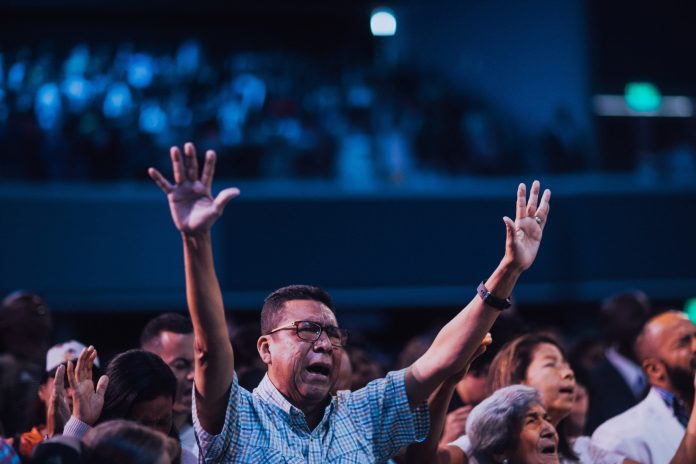Geoffrey: According to church leadership experts, most people decide whether they’ll come back to a church within the first seven to ten minutes of driving into the parking lot. That is scary, especially as a pastor, because you work a long week to make sure you’re your sermon is good, but that sermon doesn’t happen the first seven to ten minutes of a guest entering the parking lot. This should serve as a reminder to every pastor that there’s more to converting a guest to a faithful church member than just the sermon.
I’ve heard it from several people that I really respect that one of the best ways to think about church is like a restaurant: If you go to a restaurant and you can’t figure out where to park, then you finally park and it’s a long walk to the door, and it’s not clear what door you should go in… Finally, you get inside the building, and you have to use the restroom real quick before sitting down, but it’s hard to find and it just smells bad in the building… And it’s hard to find a place to sit. It’s dark. There’s no one helping you. Even if the food is amazing, your experiences up to that point are going to affect your opinion. Maybe some guests will say, “I’m gonna brave the storm,” but they’d still rather not have to jump through the hurdles.
So the first seven to ten minutes of a guest entering your parking lot need to be addressed. Important things to think about are your parking situation, the lobby’s ambience (What does it look like? What does it smell like? What does it sound like in there?), your greeters, clear signage, the check-in process if people have kids. If you have a coffee shop, is it good coffee? Is it fairly priced? All this really does matter.
Notice you’re not even trying to connect your guest at this point. You’re just wanting them to say, “This is a nice place that I feel like I could connect.”
Now, some of the trouble with this, in my opinion, is that your goals can be quantitative or qualitative. Quantitative is easy. Either this number of guests came or they didn’t. Qualitative goals are much harder to gauge. They can be subjective, like whether something felt good. One person may say yes, and another person say it’s horrible. I’m learning to make qualitative goals feel the way you want.
It almost always helps to have checklists. We need two greeters here. We need a lobby person here. But the bottom line is that all of these areas have to be thought about in detail if you want people to come and feel like they belong.
Michael: An important question to ask is, “How do we identify our guests?” We want guests to have a great experience. We want to be able to connect with them in a way that’s going to help them mature. That really does start with identifying them, right? People probably aren’t going to walk into your church and scream out, “Hey, I’m new! Come help me!” How do we identify those people? How do we help them?
Make it really easy for your guests. Have guest parking. Treat them like a guest. Make sure they know where to go and get everything that they need. Put volunteers throughout the campus with easy-to-identify lanyards that say, “How can I help?” Just like at a store, it helps the guest know who “works” there, who they can approach with questions.
At Faith Family Church, we have a staffed Welcome Hub, which is a place for anyone who’s new to come and ask questions or get a tour. We also have a volunteer at the kid check-in center whose role is simply to help guests drop off and pick up their kids.
When you get into the service, I think it’s important to think about how you address guests. That’s something that we do in every service. We welcome our guests. We let them know that we’re so thankful that they’re here. We celebrate them coming, not just those of us on stage but everybody in the church. That moment helps guests get connected.
We do a few things whenever we welcome guests. We let them know we want to serve them, and we give them the option to text “I’m new,” which allows us to start a conversation with them. We use Clear Stream for this. We also have QR codes on the backs of all our seats. When a guest scans it, it takes them to a link with all kinds of options for them. We can use QR codes for anything and they’re free, so they are a great tool. Then, of course, we have the old-school cards as well, with pens in every seat back if they want to fill out a card and let us know they’re new. It’s our way of doing everything we can to reach them where they’re at.
Then there’s a few other things that happen in service. We have giving. If someone is giving for the first time, we know this is someone who’s either new or who’s really bought in at a new level. We have salvation cards. If someone gives their life to Jesus, we encourage them with their first step of obedience to Jesus: baptism. For us, it’s been important to have those things in place so that we can easily know and help people coming for the first time or making a big decision for the first time walk into their next season with us.
After this, we begin the follow-up stage, which we will share with you in our next blog, so stay tuned for more on this topic!







